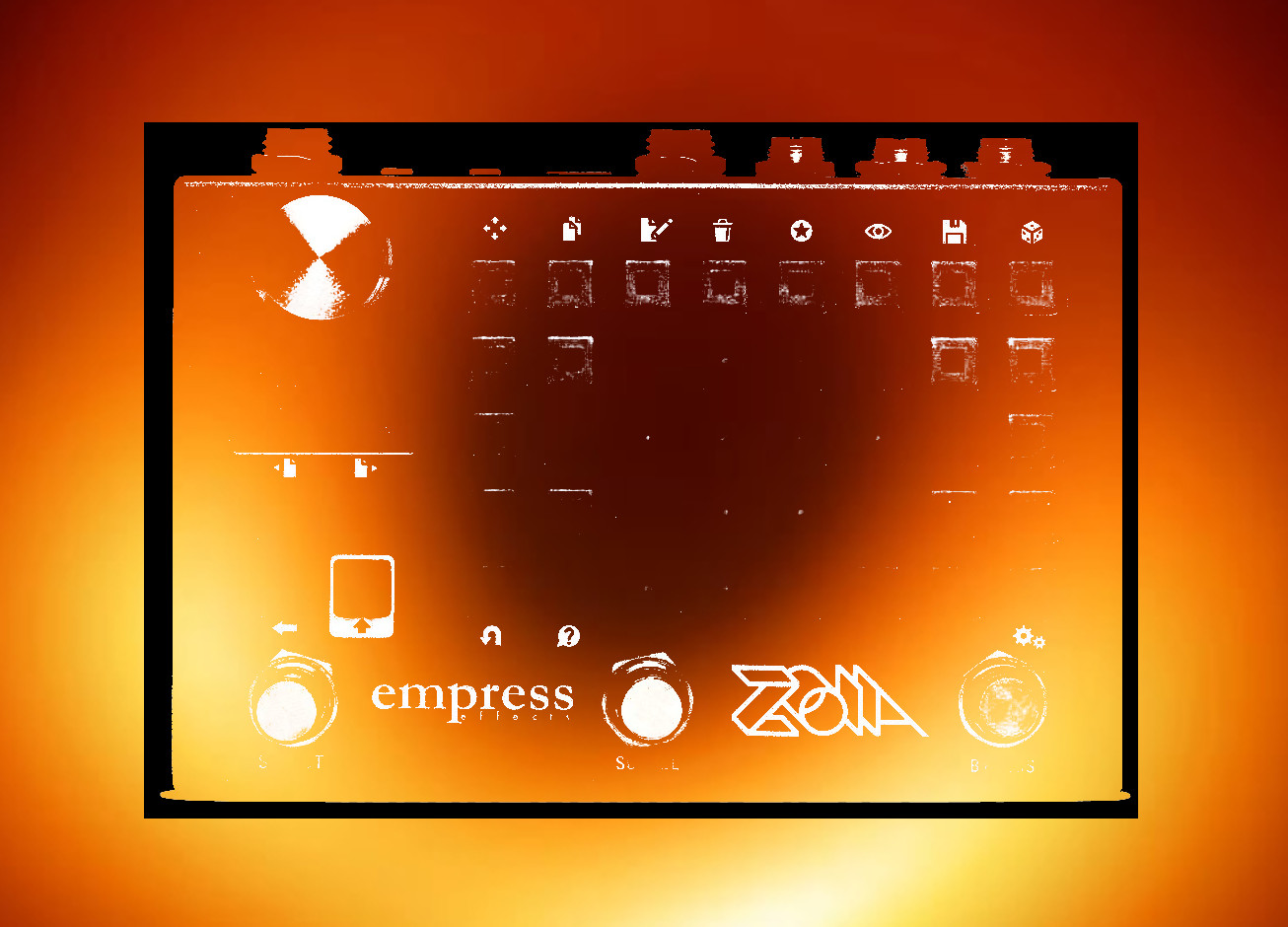Jetting off toward the horizon. Darcy Cox asked about creating an Infinite Jets “Blur” sound in the ZOIA FB group, and I threw something together, just out of curiosity, and I really liked the results, so I kept going until… these patches, one with delay effects (Time) and the other with reverb effects (Space).
============ V2 notes ==============
V2 has a few fixes, improvements, and new features:
– Fixed triggering issues in auto mode
– Fixed confusing ‘Env loop off’ button; now the ‘Env loop’ button works as on (envelopes looped)/off (envelopes one-shot)
– Added a confusing ‘Retrigger off’ button, which when turned on… turns envelope retriggering off; essentially this keeps the envelopes from retriggering each time a new layer is recorded when the patch is in ‘infinite sustain’ mode. It has no affect on the patch when infinite sustain is off
– Changed mix control to separate wet/dry levels
– Changed envelope shape select mechanism to save envelope shape selection when the patch is saved
– Changed envelopes from exponential to linear; “Envelope time” control should produce more predictable results because of this; in order to make it as useful as possible, I limited the time of each stage to 6 seconds
– Changed the delay type in Blurry Time from clean to bbd; I think this allows it to sit more easily in the mix
– Blurry Space only: I added a “Drive” control. This is a wet-only overdrive, placed between the granular modules and the filter/reverb. It can make some lovely, saturated pad sounds. It can also be loud, so compensate with the wet level control as necessary. (Unfortunately, there simply wasn’t enough CPU to add this to the Blurry Time patch.)
== Original patch notes cont. below ==
I used to own an Infinite Jets, but I honestly don’t recall a lot about how it “sounds” and certainly not the minute specifics of its different controls. I did a little YouTube digging and read the (unhelpful) manual, but the closeness of this to its inspiration is definitely suspect. That sound, I think it sounds cool, and it’s definitely playing with the same concepts.
So, three granular modules overlap (two frozen, one listening), producing successive layers of frozen buffers. These buffers can be shaped by envelopes; the envelopes can be looped; or the envelopes can be bypassed and the sound held indefinitely (until its buffer is replaced).
Those frozen signals go into a diffuser, low-pass filter, and delay (Time) or a low-pass filter and delay (Space). Those effects chains are controlled by a macro called “Space,” (per the original) and the knob movements of the Space control can be recorded.
The patches are stereo, but the audio path is summed to mono before the granular freezes, and then returned to stereo via the effects.
Controls:
Footswitches:
Left — manual capture; you can use this to manually capture sounds, instead of using the detection method employed by the patch
Middle — activate manual capture; this disables the automatic capture method (you can actually use the manual capture even when the automatic capture is enabled) — so you can use this either to keep the automatic capture from interfering with your use of the left footswitch or to hold the current buffers indefinitely (since the only thing that could replace them is a manual capture)
Right — record space control movements. If you change the space control while holding down the right stompswitch, the movements will be recorded and looped.
Front page:
Top row, global controls:
Space — a macro control; in “Blurry Time” it controls the delay’s feedback and time, the filter cut-off and resonance, and the diffuser’s gain control; in “Blurry Space” it controls the reverb decay and mix and the filter cut-off and resonance
You can record the movements of the space control (see above, re: right stompswitch)
Mix — wet/dry mix for the patch
Pitch — determine the pitch of the frozen buffers relative to input (-A1 for 1 onctave below, A0 for no pitch change, A1 for one octave above… but also points in between; this can’t do one octave above and below, but you can do a fourth below or a third above, if you wanted)
Threshold — this controls the sensitivity of the envelope follower used to freeze new buffers
Pixels through the middle show which buffer is playing and also the shape of the envelopes
Bottom row:
Manual — light indicates if manual mode is on (see middle stompswitch)
Envelope time — determines the length of the envelopes
Envelope shape — changes colors as different shapes are selected, from attack envelope (white), decay (aqua) envelope, attack/decay envelope (magenta), and sustain envelope (pink)
Envelope loop off — so… CPU casualty here; when this control is off/dimmed, the envelopes will loop; when the control is on/lighted, the envelopes will play once and not loop
Infinite sustain — buffers wil play until replaced; envelope time determines attack stage (to allow notes to fade in)



The Kind King Chris.